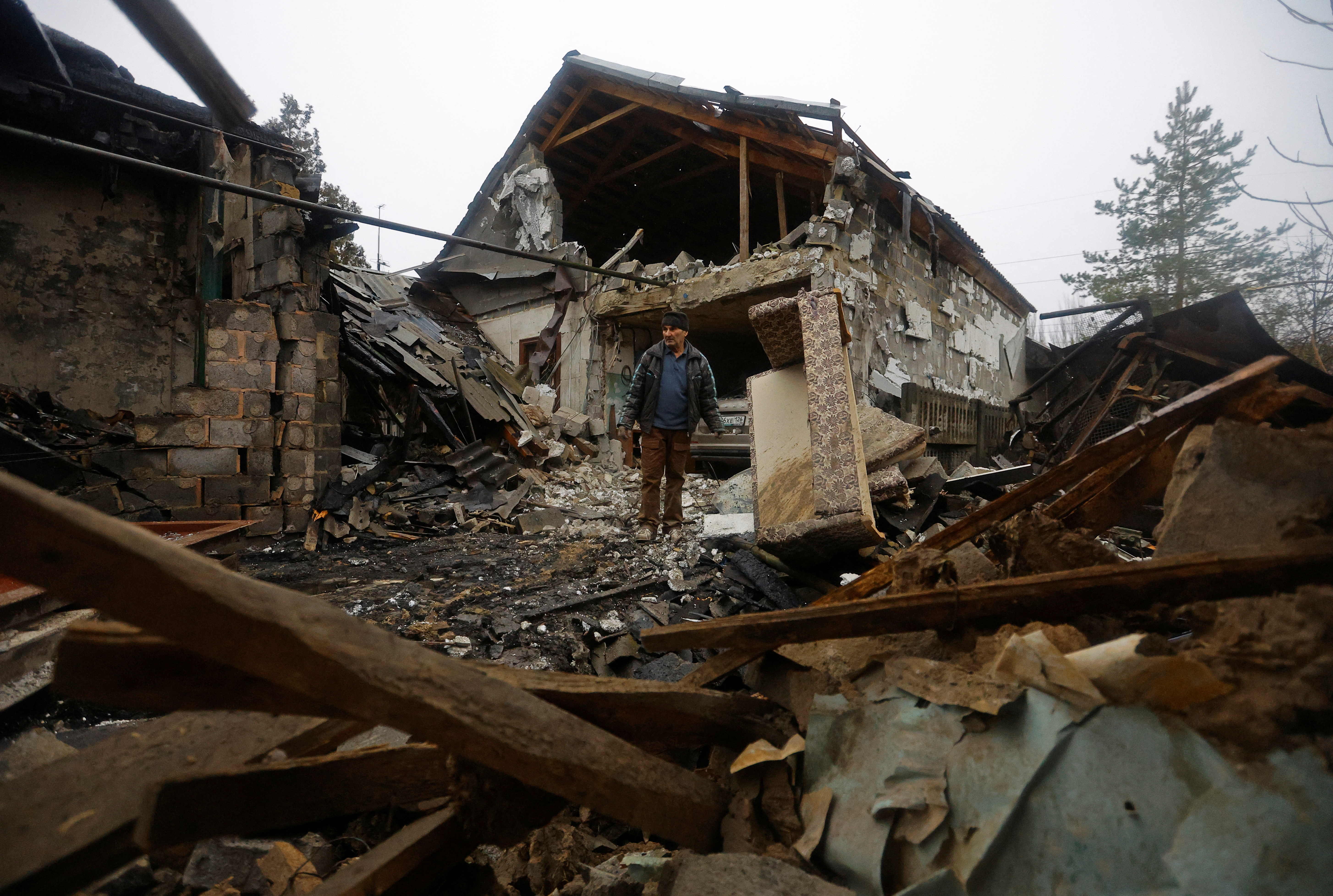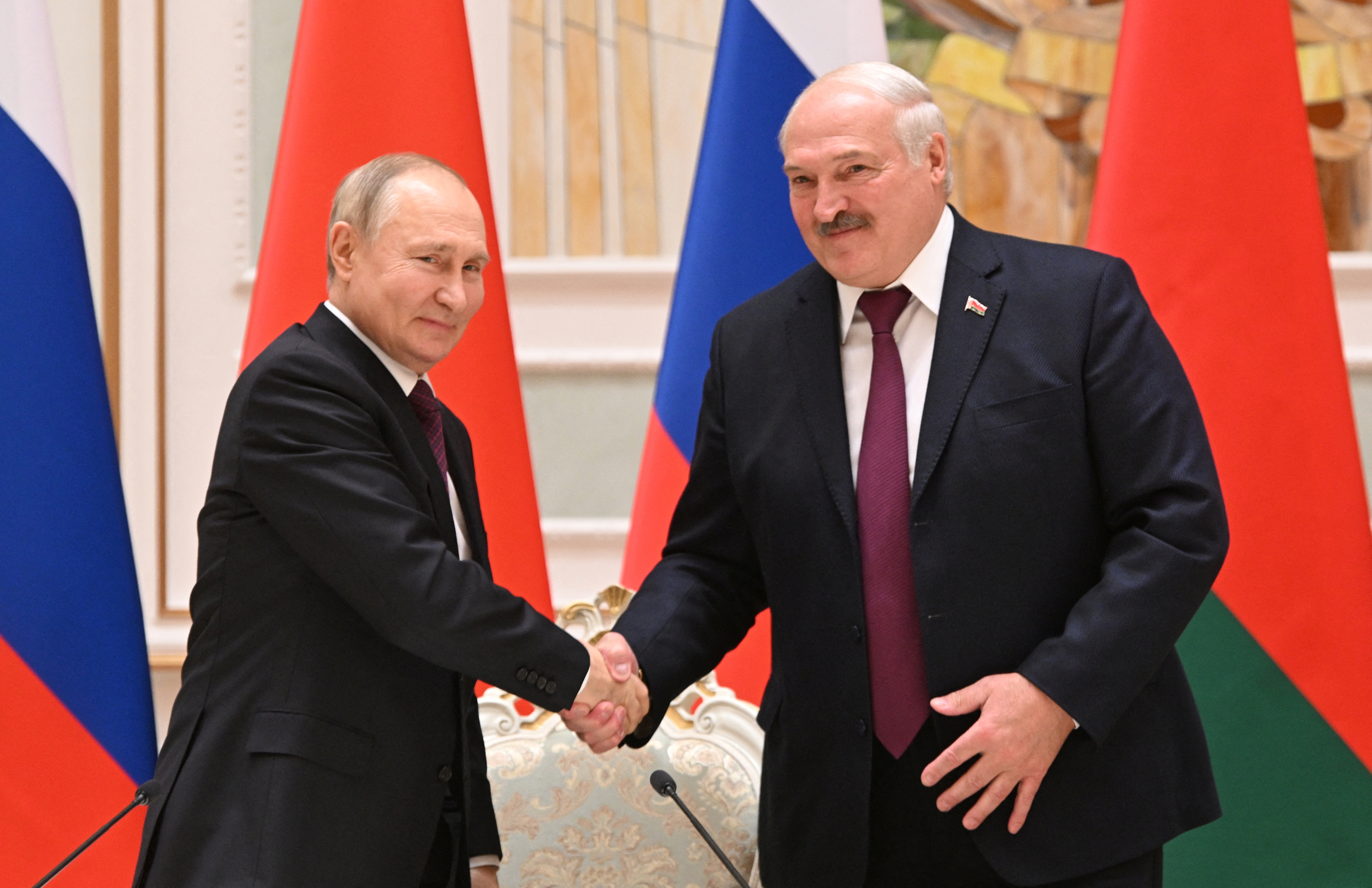President Vladimir Putin said the situation in four areas of Ukraine that Moscow has declared are part of Russia was “extremely difficult” and ordered security services to step up surveillance to secure its borders and combat new threats.
Putin’s comments made on Security Services Day, widely celebrated in Russia, came as Kyiv renewed calls for more weapons after Russian drones hit energy targets and as fears grow that Moscow’s ally Belarus could open a new invasion front against Ukraine.
Putin ordered the Federal Security Services (FSB) to step up surveillance of Russian society and the country’s borders to combat the “emergence of new threats” from abroad and traitors at home.
In a rare admission of the invasion of Ukraine not going smoothly, Putin cautioned about the difficult situation in Ukraine’s regions that Moscow moved to annex in September and ordered the FSB to ensure the “safety” of people living there.
“The situation in the Donetsk and Luhansk People’s Republics, in the Kherson and Zaporizhzhia regions is extremely difficult,” Putin said late on Monday in comments translated by Reuters.
In September, a defiant Putin moved to annex a swath of Ukraine — some 15% of the country — in a Kremlin ceremony, but earlier this month, he said the war “can be a long process.”
Putin’s move to annex the areas was condemned by Kyiv and its Western allies as illegal.
On Monday, Putin made his first visit to Belarus since 2019, where he and his counterpart extolled ever-closer ties at a news conference late in the evening but hardly mentioned Ukraine.
Kyiv, meanwhile, was seeking more weapons from the West after Russian “kamikaze” drones hit energy targets early on Monday.
“Weapons, shells, new defence capabilities…everything that will give us the ability to speed up the end to this war,” President Volodymyr Zelenskiy said in his evening address.
The Ukrainian military high command said their air defences had shot down 23 of 28 drones — most over the capital Kyiv — in what was Moscow’s third air strike in six days. Russia has targeted Ukraine’s power grid, causing blackouts amid sub-zero temperatures.
The “kamikaze” drones used in the attacks are cheaply produced, disposable unmanned aircraft that fly toward their target before plummeting at speed and detonating on impact.
To the northwest of Ukraine, there has been constant Russian and Belarusian military activity for months in Belarus, a close Kremlin ally that Moscow’s troops used as a launch pad for their abortive attack on Kyiv in February.
Putin’s trip to Minsk has stirred fears in Ukraine about the broader involvement of Belarusian armed forces in the invasion. Putin and Lukashenko scarcely touched on Ukraine at a post-talks news conference, instead extolling the benefits of defence and economic alignment.
Lukashenko has said repeatedly he has no intention of sending his country’s troops into Ukraine, where Moscow’s invasion faltered badly with a string of battlefield retreats in the face of a major counter-offensive.
The Kremlin on Monday dismissed the suggestion that Putin wanted to push Belarus into a more active role. The RIA Novosti news agency quoted Kremlin spokesperson Dmitry Peskov as saying such reports were “groundless” and “stupid”.
Both Putin and Lukashenko were also at pains to dismiss the idea of Russia annexing or absorbing Belarus.
“Russia has no interest in absorbing anyone,” Putin said.
Asked about this comment, U.S. State Department spokesperson Ned Price said it should be treated as the “height of irony”, given it was “coming from a leader who is seeking at the present moment, right now, to violently absorb his other peaceful next-door neighbor.”
The 10-month-old conflict in Ukraine, the largest in Europe since World War Two, has killed tens of thousands of people, driven millions from their homes and reduced cities to ruins.
Ukraine’s General Staff said Russian artillery hammered 25 towns and villages around Bakhmut and Avdiivka in the east and several areas around Kupiansk, a northeastern town retaken by Ukraine in September.
It also said Ukrainian air and artillery forces carried out more than a dozen strikes on Russian troops and hardware, including ammunition dumps, and shot down two helicopters.
Alexei Kulemzin, the Russian-installed mayor of the city of Donetsk, said Ukrainian shelling hit a hospital wing, along with a kindergarten, posting on Telegraph a photo of what appeared to be a waiting room with smashed furniture and fittings.
Reuters could not independently verify the battlefield accounts of either side.
Russia says it is waging a “special military operation” in Ukraine to rid it of nationalists and protect Russian-speaking communities. Ukraine and the West describe the Kremlin’s actions as an unprovoked war of aggression.
Related Galleries:





